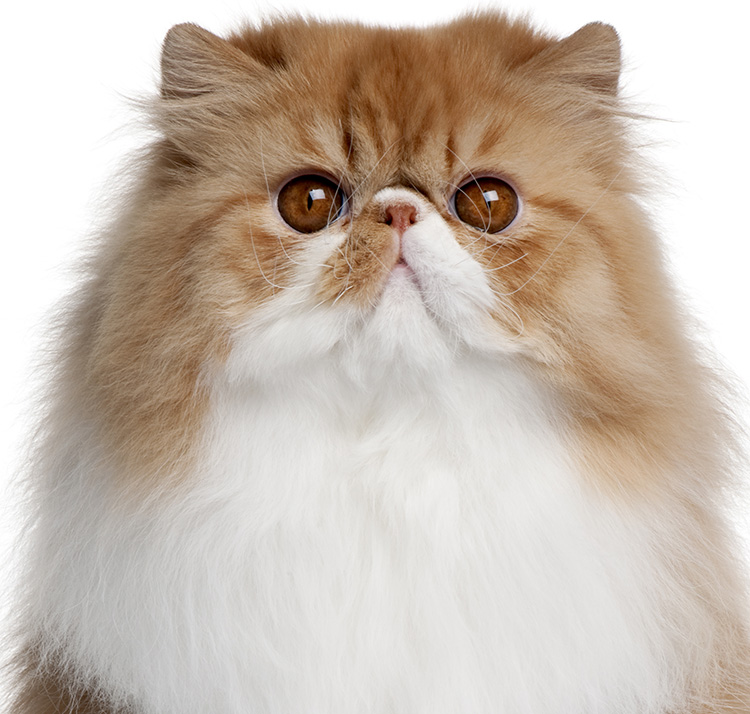
Cats with kidney disease (CRD) will do best when fed a diet that contains high quality animal protein, consumed in limited amounts. It is the excess consumption of protein that causes the buildup of waste products because the kidneys have a hard time removing them. This causes the BUN and creatinine levels to rise. When considering a diet to choose for a cat suffering from CRD, it is important to look at not only the total percentage of protein and phosphorus listed in the guaranteed analysis, but also how much of that diet does the cat actually consume. A diet with lower levels of protein and phosphorus will not help a cat suffering from CRD if the cat consumes twice as much of that food each day. Most CRD cats will over consume any diet containing more than 6% digestible carbohydrates.
It has been our experience that almost all cats will do very well on Young Again Mature Health; a dry kibble that contains 54% protein, 22% fat and 0.60% phosphorus or the ZERO Mature Health which contains 52% protein, 24% fat and 0.50% phosphorus.
Comparing the protein levels between YA and a typical prescription diet, it obvious that YA has more protein. However, the average cat will consume much less of YA, usually 40-60% less, because it is nutrient-dense and is digested more slowly. It comes down to this: it is not the percent of protein in the food, but the amount of protein consumed by your cat each day.
Phosphorus is now recognized as the single most important nutrient to control when feeding the CRD cat. The average ten pound cat will consume about 45-80 grams of a popular prescription diet per day (based on the companies feeding recommendations). It is unclear how a 10 pound cat could have such a wide range of food consumption 45-80 grams. Because many prescription diets contain higher levels of carbohydrates and very low levels of phosphorus (0.5%), consuming 45 grams of this diet may provide acceptable levels of phosphorus, but 80 grams may not.
Young Again Mature Health contains less than 6% digestible carbohydrates and 0.6 % phosphorus and Young Again ZERO Mature Health contains no digestible carbohydrates and 0.50% phosphorus. Most ten pound cats will only consume 35-45 grams of either food when fed free-choice, providing acceptable levels of protein and phosphorus. So, when making a comparison, it is important to determine exactly how much food is being consumed in order to calculate the amount of protein and phosphorus that your cat is actually ingesting.
High carbohydrate diets are almost always overeaten by CRD cats when fed free choice. You could restrict the amount of any high carb food to prevent overeating, however, cats that are always hungry are always unhappy. It is our experience that an unhappy cat makes for an unhappy household and a family that is most often sleep-deprived. Cats that are always hungry will let you know in no uncertain terms that they are not satiated. There will be a lot of crying and vocalizing at all hours, day and night. Begging, getting underfoot in the kitchen and climbing all over someone in bed are common behaviors that hungry cats are likely to display.
To manage chronic renal failure in cats, they should be fed high quality (animal) protein/fat and it must be low in phosphorus. The source of the protein is also very important, as plant proteins are not well digested or utilized by cats because they are obligate carnivores. Both of our mature formulas have less than 6% or zero digestible carbohydrates and are low in phosphorus making them an excellent choice for the CRD cat.

Cats fed Young Again free-choice rarely overeat and there is almost never a need to restrict their food consumption. Cats will consume the least amount of food when they are fed our foods free-choice (no half full bowls allowed). The reason is simple; your cat is an obligate carnivore and was never meant to consume large amounts of carbs.
When feeding a cat with kidney disease, we feel the control of phosphorus ingestion is critical and should take precedence. High protein diets should not negatively impact the quality of your cat’s life as long as the protein is from an animal source. Because cats consume less of our food, the protein consumed on a daily basis is typically less than other dry foods.
Periodic blood testing for BUN and creatinine as well as checking urine specific gravity are important for monitoring how your cat’s kidneys are functioning. CRD cannot be cured, but it CAN be managed to provide a cat with a longer lifespan.